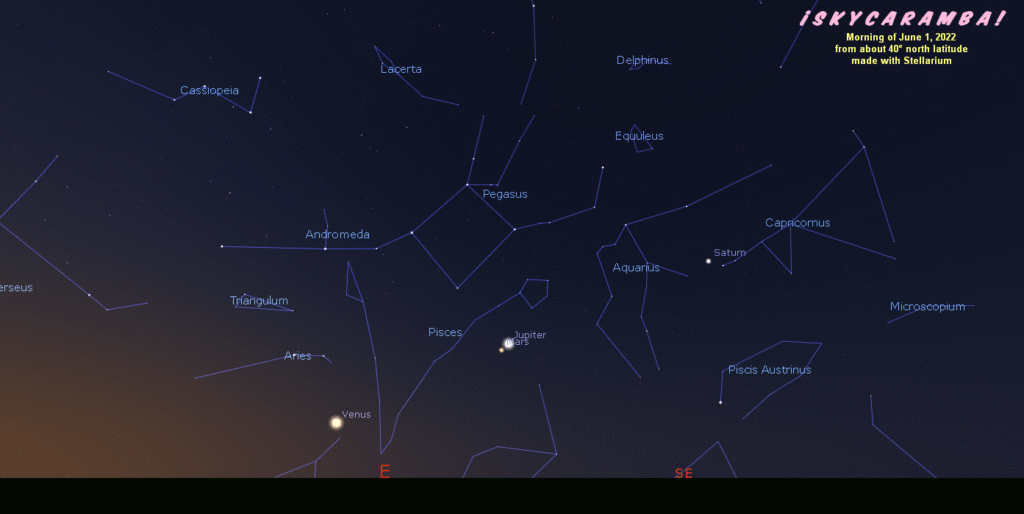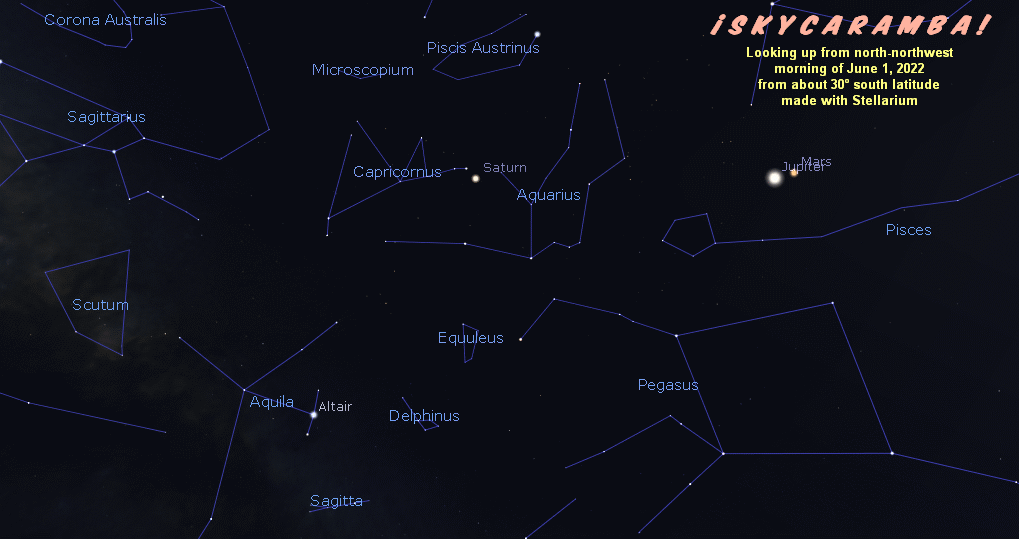The month starts with a waning crescent moon at northern lunistice and setting in the evening along with bright stars Procyon, Pollux, Castor, and Capella. Procyon is the bright star in the little dog Canis Minor. See Gomeisa to its right. Pollux and Castor are better known, because they are the head stars in Gemini the twins. Capella is called the goat star and is part of Auriga, the goat herder.

The moon passes close to Pollux the next night. It’s in Cancer on the 3rd. On the night of the 5th, the moon is a much thicker crescent in the Leo sickle. The bright starit’s near is Regulus. The dimmer sickle star it’s close to is known by a few names including Al Jabhah and Chertan. The moon will occult that star for viewers in Texas, Mexico, and other countries in Central America. In local time zones, the occultation will be on Sunday evening. The UT date is the 6th.

The moon is at first quarter and moving into Virgo on the 7th. Watch it wax and pass Porrima on the next night and then Spica the night after that. An almost full moon approaches Antares in Scorpius on the 12th. That Sunday evening will be another night for the moon to pass in front of a mid-brightness star that’s part of a constellation outline. Dschubba is the middle star in the head of Scorpius. The eastern third of Canada and some states in the northeastern U.S. will get the view. So will many places in the North Atlantic.

Southern hemisphere residents may find the full moon is especially bright on the 14th. The moon is at perigee on that day and at southern lunistice the next. The moon is about 25% brighter when its closest to Earth than at its farthest.

Saturn rises around local midnight when the month begins. By mid morning you see Jupiter and then Mars. The big planet and the red planet start the month very close. Mars is moving eastward faster than Jupiter and the two separate noticeably morning to morning. Venus rises closer to dawn and is also moving eastward at about the same pace as Mars.

If you’re in the southern hemisphere, you get to see Mercury in this lineup all month long. The planet seems to hold still compared to the stars behind it as Venus approaches until about the 10th. Then, Mecury starts to head sunward as though to try to get away from Venus. Around the middle of this month, Mercury’s easily seen by those north of the equator too. The planet’s at greatest elongation on the 16th. It’s 23.2° west of the sun. And that’s your best chance in a long time to see all five naked eye planets in the sky at once.

But wait. There’s more! If you have binoculars or a small telescope, it’s even better. Neptune and Uranus are there too! All six of the objects that the International Astronomical Union recognizes as planets are in the sky at the same time. You’ll need a star chart to help you find Neptune and Uranus. You may also have to pick a date when the moon isn’t near them. After all, they’re dim. Even a crescent moon casts enough light to make things hard.
The waning moon will help you identify the planets in the second half of June. It will be by Saturn on the morning of the 18th, Jupiter on the 21st, Mars on the 22nd, Venus on the 26th, and Mercury on the 27th. Venus is passing between the Pleiades and the Hyades at its pairing with the moon.
Mars is at perihelion on the 21st. It’s 1.381 astronomical units from the sun. That’s 206.6 million kilometers.
The June solstice is on the 21st at 09:14 UT.
The moon’s circumstances this month:
Northern lunistice on the 1st at 26.9°
On the equator going south on the 9th
Southern lunistice on the 15th at 26.9°
On the equator going north on the 21st
Northern lunistice on the 29th at 26.9°
Apogee on the 2nd at 406,200 km
Perigee on the 14th at 357,400km
Apogee on the 29th at 406,600km
First quarter is on the 7th
Full moon is on the 14th
Last quarter is on the 21st
New moon is on the 29th
